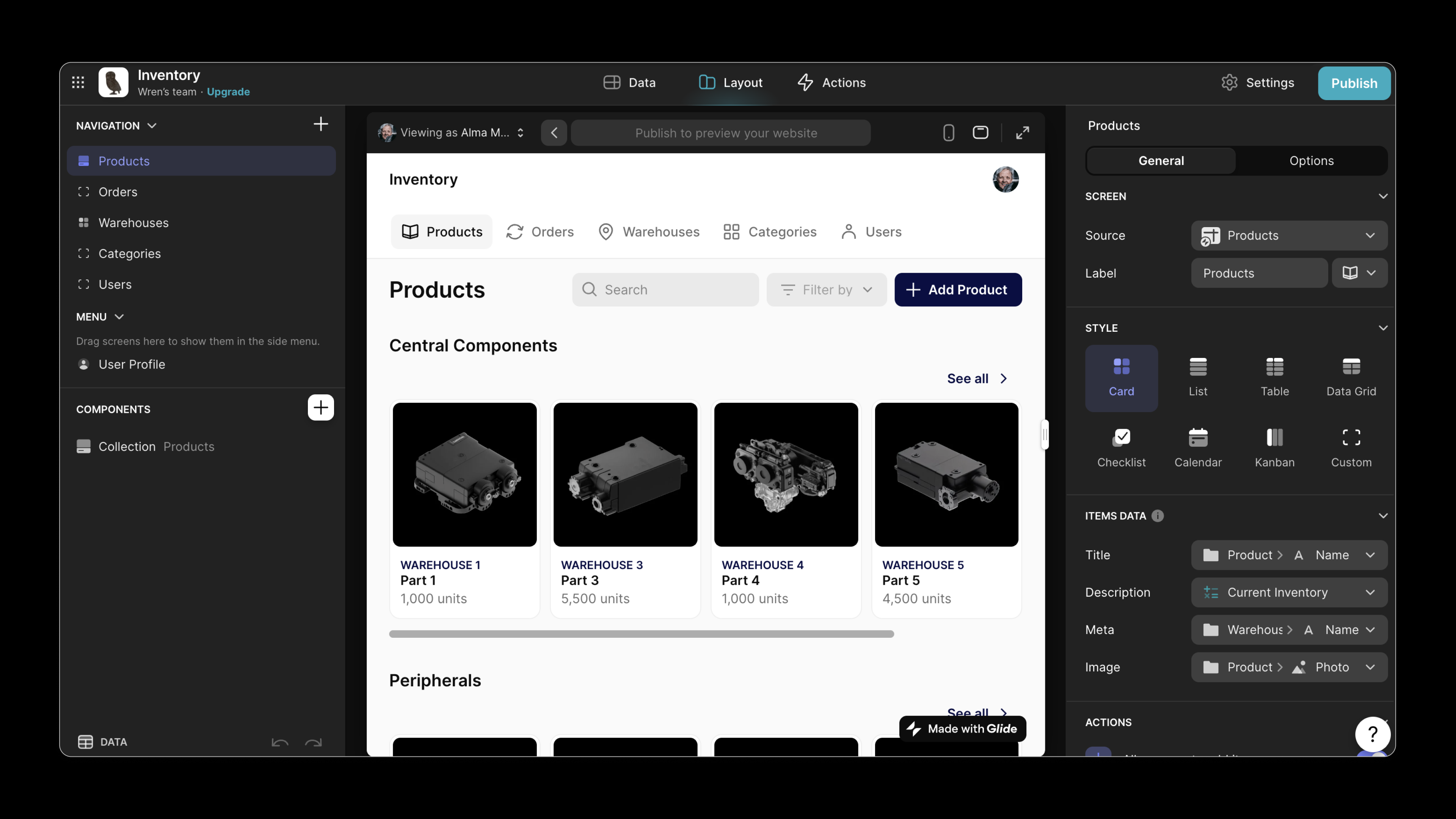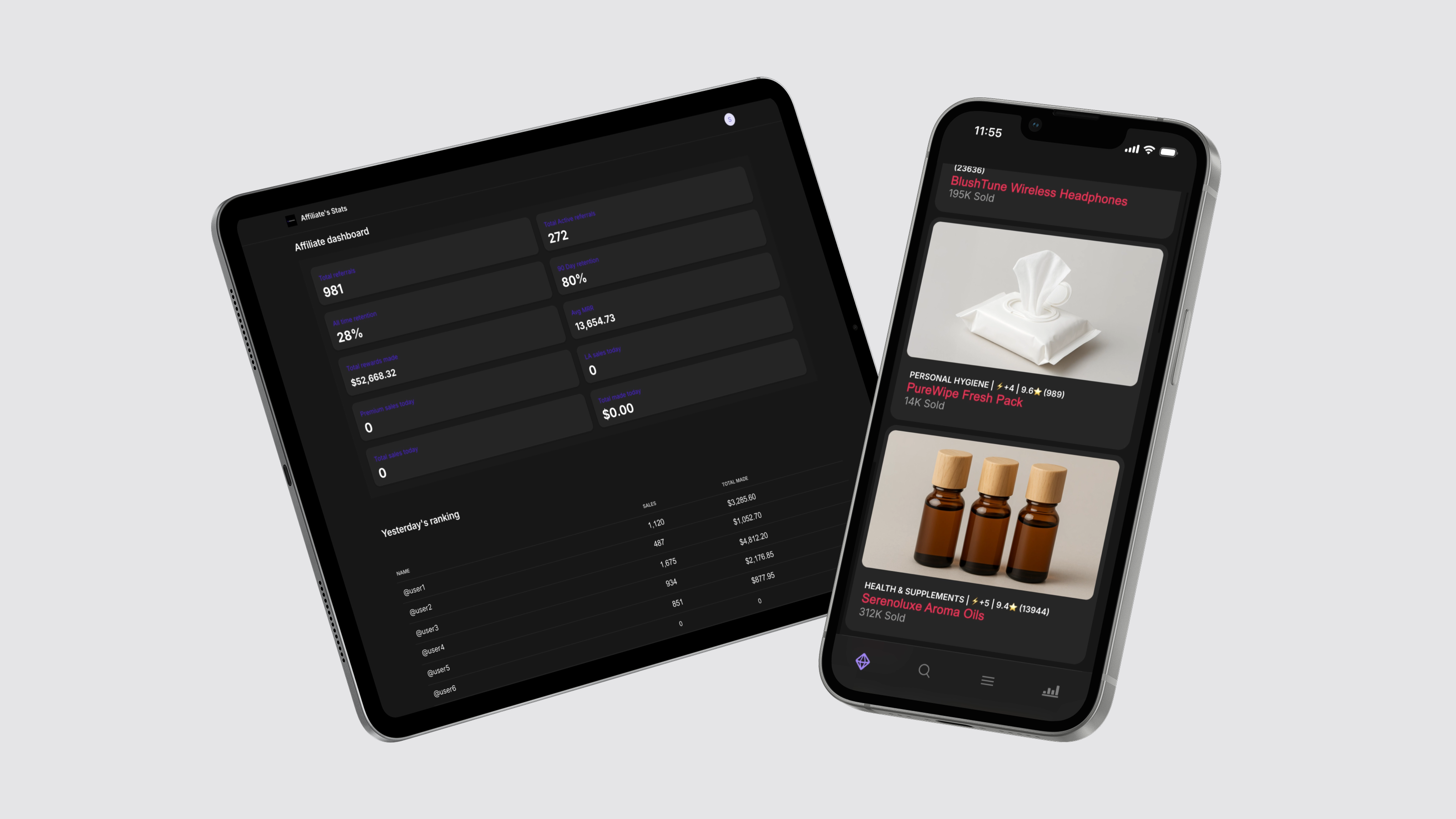Businesses have never had as much freedom to design and build their own internal tools as they do today in 2025. Between no-code, AI-assisted coding tools, and talented engineering teams, custom software is a reality for teams of all types.
These are what might be called “dark apps”. They’re apps that are never designed to show up in the app store or launch to the masses. Instead, they create more efficient systems for businesses, give employees and clients easier ways to get their work done, and fill the gaps left by rigid off-the-shelf software.
This article will examine the process of building custom business apps and help you assess which tools and techniques are best for your business.
Define your app idea and scope
Before writing any code or configuring tools, you want to clearly define what your app should accomplish. This involves a few key steps:
Identify a business need or inefficiency
Look at your current operations and find your pain points and bottlenecks. Budensome multi-step processes or manual data entry tasks are good opportunities for automation. A good internal tool idea directly addresses recurring inefficiencies, saving time and reducing errors in everyday workflows.
Define the target audience
Determine who will use the app so you can tailor it to their needs.
- Employees: Create something that works where they work and isn’t overloaded with excess features. It should help them do their job more efficiently. To that end, you might want to build in custom views so employees can’t see sensitive data or get overwhelmed by data that isn’t relevant to their role.
- Management and leadership: Build admin apps so that leadership has a big-picture view of operations or create dashboards to give leadership automated weekly reports.
- Clients or customers: Make portals to collect data from customers or keep them up to date. Customer-facing apps will need a more professional, polished appearance and strict access control.

Organize your data sources
Figure out where the data being used for this process is currently living. Too many processes are still being run out of spreadsheets. These are prime opportunities for converting into a more efficient internal tool.
Most commonly, data sources will be digital spreadsheets (like Google Sheets, Excel, or Airtable) or SQL databases (like MySQL, BigQuery, PostgreSQL, or SQL Server) for larger quantities of data. You might also have data living in physical documents like paper spreadsheets or forms that can be digitized using AI and OCR (optical character recognition) technology. Lastly, other software can be connected to your custom apps to break down data silos and increase the availability of data.
Plan how your app will connect to or import this information. Many businesses find their data scattered in spreadsheets or legacy tools, so your app can become a centralized connective tissue for your data. See if your chosen platform has native integrations with your data sources or if you’ll integrate with those systems via APIs, use export/import (like CSV files), or migrate data into a new centralized database for the app.
Choose your app development method
Once the scope is defined, decide how you will build the app. In 2025, you have several development approaches available, each with advantages and trade-offs:
Traditional coding
Developing your app with professional programmers writing code, using either in-house engineers or a hired software development agency. The biggest benefit is maximum control and customization. With code, you can build any feature that exactly meets specifications without platform limitations. Complex logic, unique UI designs, and special integrations are all possible with custom code.
The downside of traditional development is that it is typically significantly slower and more resource-intensive. It often takes months and a team of developers to deliver a full-featured app, incurring significant costs. Since everything is built from scratch, you’ll also need to invest in ongoing maintenance, hosting, security fixes, and any future changes that are required as your needs scale. Ensure you have the budget and time if you choose this route.
Best for:
SaaS products, public-facing apps, highly specialized tools, use cases with tight compliance and security needs, and tools for highly regulated industries like healthcare, finance, and government.
Tools:
Developers can use a wide variety of programming languages, such as JavaScript / TypeScript, Python, Java, and C#, to create custom internal tools for your business.

No-code platforms
No-code and low-code development allow you to build applications through visual interfaces and configuration, with little or no manual coding. The main benefit of this approach is speed and ease of use. Teams can assemble a working app in days or weeks instead of months, using drag-and-drop tools and pre-built components.
No-code platforms often include scalability and cloud hosting. Some platforms are built specifically for internal tools and business apps, while others have different focuses. You'll need to choose the right platform, but if you do, it will align well with internal business needs.
For example, an internal tool builder like Glide can easily connect to common data sources like Google Sheets, databases, or SaaS tools via built-in integrations, fitting seamlessly into your existing workflows. This makes no-code especially attractive for internal operations apps that need to pull data from various systems or spreadsheets.
The trade-off is that no-code solutions may impose some limits on customization. If you need very advanced logic or an unconventional UI, you might hit the platform’s limitations.. Also, be mindful of platform costs and vendor lock-in (migrating to a coded solution later can be challenging). Overall, no-code is an excellent choice for quickly delivering internal tools that meet common needs.
Best for:
Internal tools embedded into processes or data. Client portals, employee portals, knowledge management apps, inventory management tools, inspections apps, event apps, logistics tools, data dashboards.
Tools:
Not every no-code tool is designed for internal apps so you need to choose your platform with intention. Some are for websites like Webflow, others are intended for SaaS products like Adalo or AppyPie. Others are optimized for internal tools, but limited to within their gated ecosystem, like Microsoft PowerApps, Airtable Cobuilder/Omni.
For internal tools, the top options are:
- Glide for professional-quality internal apps that start from data and incorporate advanced features like AI and automation.
- Softr for easy-to-assemble, quick tools that don’t need more complex features like workflow logic.
- Retool for teams that have high complexity needs and a technical team that can handle a more challenging interface.

What is no-code? Learn more about how to develop apps without engineers
Read the guideVibe coding/AI development
The newest app-building tech in 2025 is vibe coding, which involves collaborating with an AI by describing what you want in natural language and having the AI write the code, which you then refine. The advantages here are remarkable speed and design freedom in the prototyping stage. You have almost unlimited flexibility in terms of your app’s appearance and layout, and AI has been shown to be a surprisingly high-quality designer.
This approach encourages rapid iterative prototyping. You can quickly try out features, test them, and adjust your prompts to refine the app’s behavior or design in a conversational loop.
As with any new technology, there are a lot of limitations and risks with vibe coding. AI can produce insecure or inefficient code. Studies have found that a significant portion of AI-generated code contains vulnerabilities or errors that make it risky to use with sensitive data. While AI can handle basic tasks, it struggles with very complex or novel problems. Adding some of the more advanced, but essential, features you’ll need for internal tools, like user authentication, can be almost impossible.
There are also concerns about scalability and maintainability. The code will be difficult to modify or scale with your needs. Ultimately, most businesses will need to hire a developer anyway to complete a vibe-coded app and assess it for safety and security.
Best for:
The best uses for vibe coding are in areas that you need a high level of design freedom, but don’t need advanced features or high security needs. Landing pages, microsites, and standalone siloed tools that don’t use sensitive data like a design asset app, game, or event app (without login or attendee info). Vibe coding is also an excellent way to prototype or MVP new ideas.
Tools:
The top vibe coding platforms fall into two categories: fully AI platforms that don’t require technical expertise and integrated IDEs that use AI but require coding to complete. For non-coders, the new AI coders like Lovable and Bolt will be the best choice. For those with development experience, there are more options, such as Cursor, Replit, and Copilot.

Identify how to build your app
After choosing a development approach, decide who will actually create the app and where the work will happen. Your options include leaning on internal talent or seeking outside help, each with pros and cons:
Use internal developers
If you’ve got an engineering team on staff already, you can put in tickets to request custom software be built for your team. With traditional development, this may squeeze your company’s resources. If you’re going the no-code or AI route, you have more flexibility. Team members closer to the problem who have a reasonable grasp of technology can be used to build their own tools and solutions. For teams with the time and resources, this is a great way to ensure your solutions fit your needs well. After all, the person using the tool will be directly involved in creating it.
Work with external experts or agencies
If you don’t have the time or resources to build an app yourself, you can hire outside help. Traditional development teams can be pricey, and their development process will take a while, but they will get you a highly specialized app built, launched, and maintained.
If you’re using no-code or AI, you can also hire individual developers or agencies with experience with your platform of choice. These partners will be able ot get your solution built faster, but they can also often serve as consultants, advising what features to build and even suggesting additional solutions. Some platforms have full ecosystems of agencies and freelancers working with their platforms, like Glide Experts. Other developers might choose to work with a variety of tools depending on the needs of the client.

Learn how to hire the best expert or agency to build your app
Find helpDeploy, iterate, and scale your custom internal tools
Launch your app to your team, stay open to feedback, and make sure you can iterate on the design as it rolls out and you discover new needs. As usage grows, optimizing performance, tightening security, and integrating with other systems will make it possible for your business app to scale into a reliable, enterprise-ready tool.
And once your app is in use, what’s next? Maybe more custom internal tools. What’s the next most painful bottleneck in your operations? Or the next golden opportunity?
Mastering any of these techniques gives businesses real control over the software they use every day. In 2025, there’s no reason that businesses shouldn’t be giving their teams the power to craft their own custom tools for work. Whether you’re introducing them to no-code or deploying AI development on guardrails, it’s time to plan your next app.






